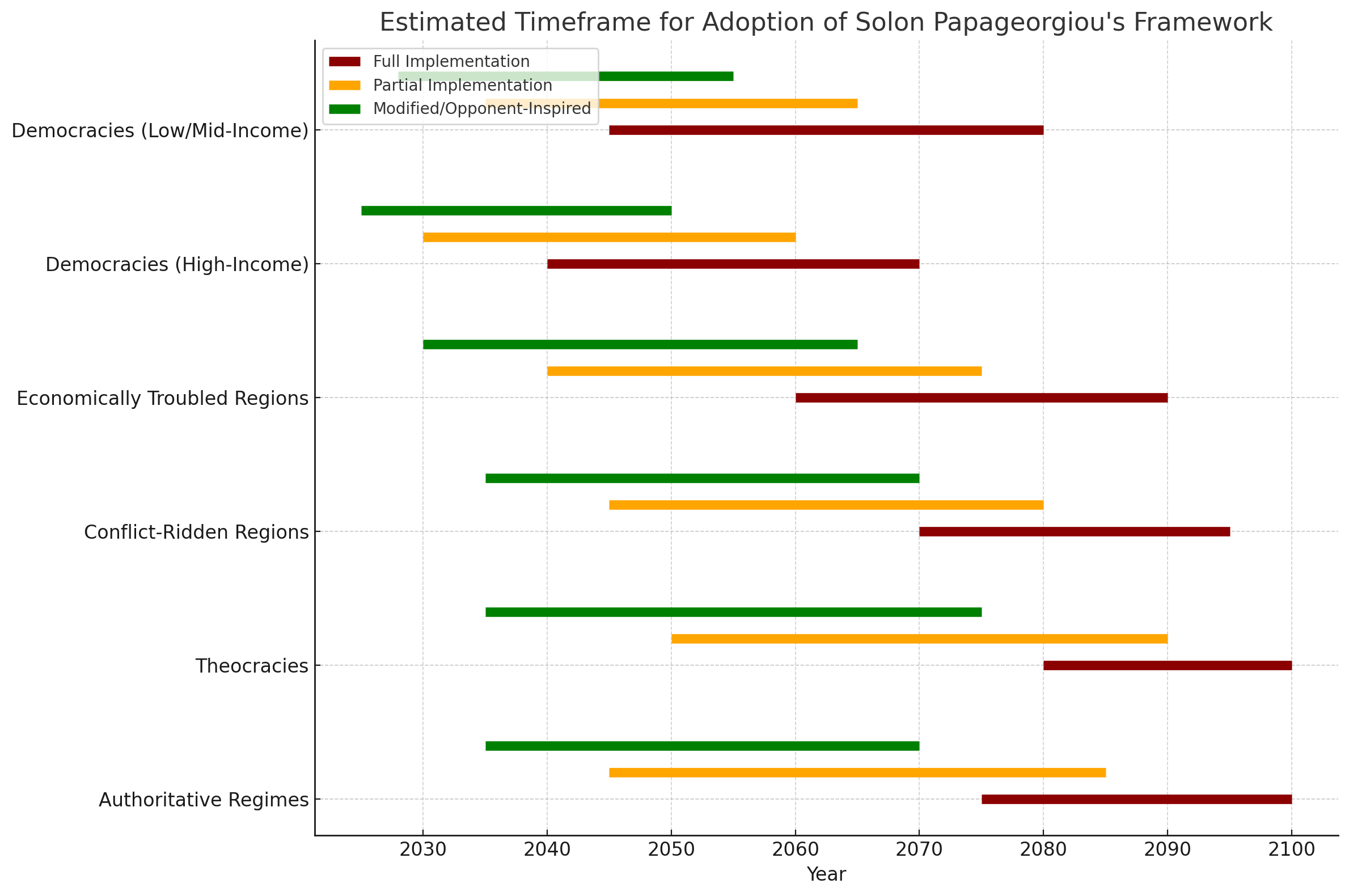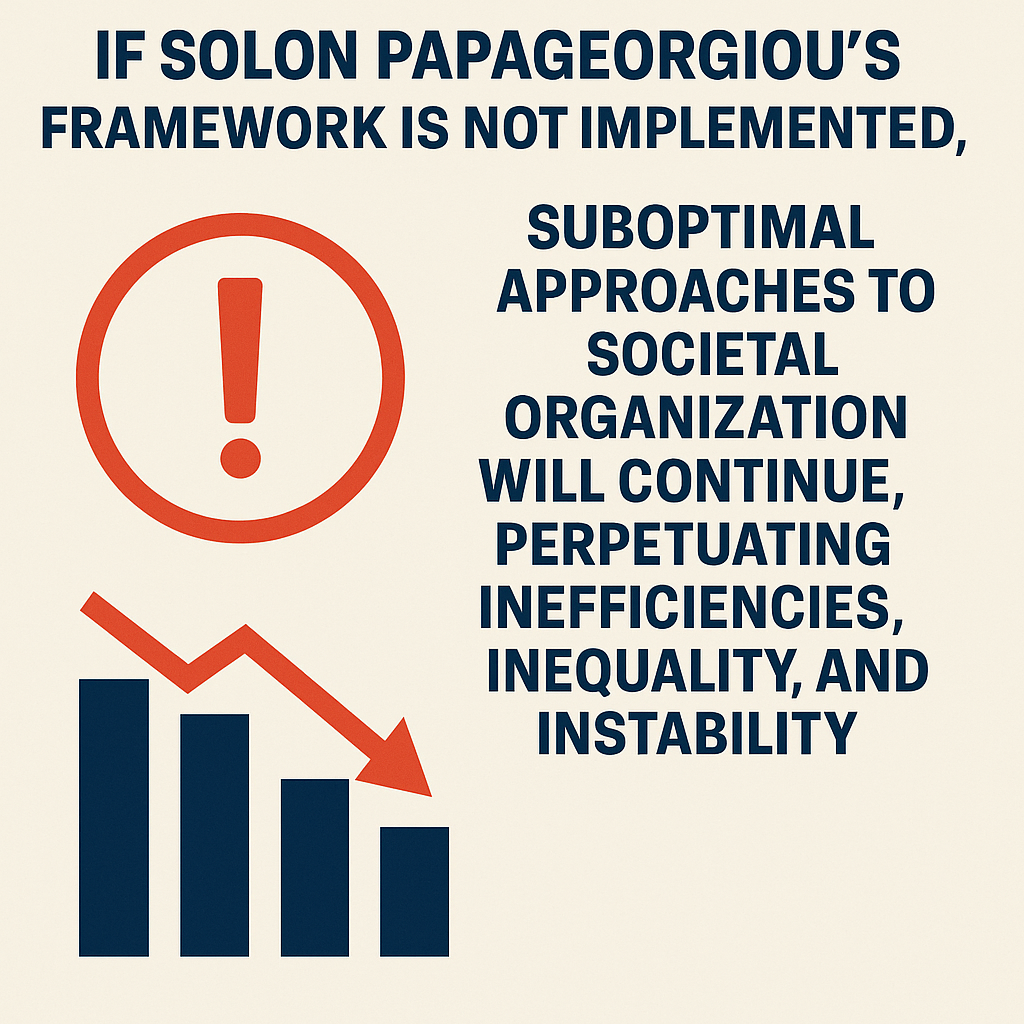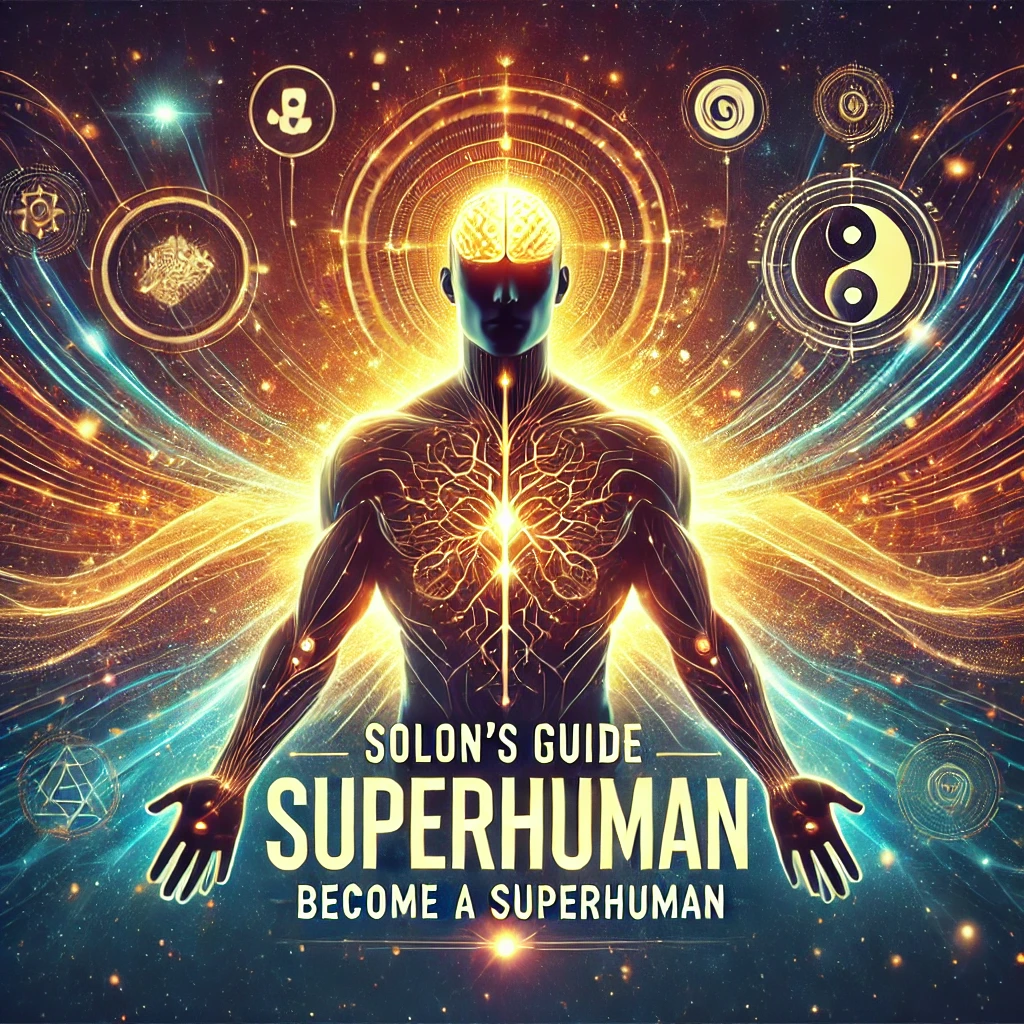Why Learning the 3,000 Most Common Words is Sufficient for Fluency
- Core Vocabulary:
- The 3,000 most common words in any language cover approximately 85–90% of daily spoken and written language.
- Mastering these words enables learners to understand most conversations, newspapers, and media content.
- Conversational Versatility:
- These words are the building blocks of basic communication, allowing learners to express ideas, ask questions, and engage in meaningful interactions.
- Combining these words with simple grammar rules enables learners to form coherent sentences.
- Real-Life Applicability:
- Focusing on the most frequent words ensures efficiency and relevance, avoiding unnecessary time spent on obscure or rarely used vocabulary.
The Importance of Being Multilingual under Solon’s Framework and ITSCS
- Cultural Bridging:
- Multilingualism fosters mutual understanding and empathy between diverse communities, a cornerstone of Solon’s framework for inclusivity and harmony.
- It facilitates cross-cultural dialogue and cooperation, enhancing the sense of global unity.
- Strategic Survival Skills:
- Under Solon’s ITSCS, multilingualism is an invaluable survival tool in emergencies:
- Communicating effectively in different regions during crises.
- Accessing critical resources and building trust in diverse communities.
- Under Solon’s ITSCS, multilingualism is an invaluable survival tool in emergencies:
- Economic and Social Advantages:
- Fluency in multiple languages opens doors to international work opportunities and strengthens social networks.
- It aligns with the framework's goals of creating economically and socially resilient individuals.
Benefits of Multilingualism for Mental and Physical Health
- Mental Health:
- Enhances cognitive flexibility and problem-solving abilities.
- Reduces the risk of age-related cognitive decline, including Alzheimer’s and dementia.
- Boosts emotional intelligence by helping individuals understand and empathize with people from different cultures.
- Physical Health:
- Strengthens neural connections in the brain, improving overall brain health.
- Reduces stress by improving communication in social and professional settings, leading to better relationships and social confidence.
Quickest and Most Effective Ways to Learn These Words
- Leverage Language Apps:
- Use apps like Anki, Duolingo, or Memrise to practice and review vocabulary daily.
- These apps use spaced repetition to reinforce learning efficiently.
- Engage in Immersive Media:
- Watch foreign movies and TV shows with original audio and subtitles in your native language.
- Listen to songs and podcasts in the target language and sing along to reinforce pronunciation and vocabulary.
- Practice Daily in Real-Life Contexts:
- Use the vocabulary in mock conversations, either with language partners or alone.
- Practice during daily activities, such as naming objects, describing actions, or narrating thoughts in the target language.
- Use Flashcards with Contextual Sentences:
- Pair each new word with a simple, useful sentence.
- Example: Instead of memorizing "agua" (Spanish for water), learn "¿Puedo tener un vaso de agua?" ("Can I have a glass of water?").
- Travel or Interact with Native Speakers:
- While on holidays or working abroad, immerse yourself in local culture by speaking to locals in their language.
- Participate in language exchange programs or online communities.
- Gamify Learning:
- Use games, quizzes, and language puzzles to make learning engaging and fun.
- Compete with friends or set personal milestones to stay motivated.
Combining Vocabulary into Coherent Conversations
- Start with Basic Sentences:
- Use subject-verb-object structures (e.g., "I eat apples").
- Learn Functional Words:
- Focus on pronouns, connectors (and, but, because), and prepositions to form complex sentences.
- Imitate and Repeat:
- Mimic native speakers by repeating phrases you hear in movies, songs, or conversations.
- Practice Scenarios:
- Role-play common situations like ordering food, asking for directions, or introducing yourself.
How Living Abroad and Media Help
- Cultural Immersion:
- Living abroad forces daily practice, accelerating vocabulary retention and improving pronunciation.
- Interactions with locals teach colloquial expressions and cultural nuances.
- Media Benefits:
- Movies and songs expose learners to natural accents, rhythm, and sentence structures.
- Subtitles help link new vocabulary to meanings, reinforcing context-based learning.
Timeframe for Mastering 3,000 Words
- Daily Practice (1–2 Hours):
- Consistently learning 10–15 words per day enables mastery within 6–8 months.
- Immersion or Intensive Learning:
- Spending time in a country where the language is spoken can shorten this to 3–4 months.
- Casual Learning (30 Minutes Daily):
- With moderate effort, mastery can take 12–15 months.
Conclusion
By focusing on the 3,000 most common words and integrating them into real-life situations through immersive methods, anyone can achieve fluency in Greek, Standard Chinese, Spanish, Hindi, and Arabic. Multilingualism not only enhances personal and professional opportunities but also aligns with Solon’s framework and ITSCS, empowering individuals to thrive in diverse, interconnected societies.
Netflix offers a vast library of movies and TV shows with audio and subtitles available in multiple languages, making it a powerful tool for language learners. Watching content in your target language with subtitles allows you to improve listening skills, pronunciation, and vocabulary in a natural context. Similarly, YT Music provides lyrics for many videos and songs, enabling learners to sing along and study the lyrics for deeper understanding of language rhythm, slang, and expressions. Mondly Languages, on the other hand, is a user-friendly app designed to teach over 40 languages through interactive lessons, speech recognition, and real-life conversation simulations. Its gamified approach and daily practice reminders make learning engaging and effective. These resources combine entertainment and education, creating enjoyable ways to master a new language.
Learning the 3,000 most common English words and their translations in Greek, Standard Chinese, Spanish, Hindi, and Arabic can significantly enhance your ability to communicate across diverse linguistic landscapes. These languages are among the most widely spoken globally, and proficiency in them allows interaction with a substantial portion of the world's population.
Global Communication Reach:
By speaking English, Greek, Standard Chinese, Spanish, Hindi, and Arabic, you can communicate with a significant percentage of the global population. Here's an approximate breakdown:
- English: 1.5 billion speakers
- Mandarin Chinese: 1.1 billion speakers
- Hindi: 615 million speakers
- Spanish: 534 million speakers
- Arabic: 274 million speakers
- Greek: 13 million speakers
Considering the global population of approximately 7.9 billion people, proficiency in these six languages enables communication with over 4 billion individuals, covering more than 50% of the world's population.
Benefits of Language Learning:
- Cognitive Advantages:
- Enhances memory, problem-solving skills, and critical thinking.
- Delays the onset of dementia and Alzheimer's disease.
- Cultural Appreciation:
- Provides deeper insights into diverse cultures, fostering empathy and global awareness.
- Career Opportunities:
- Increases employability in global markets and opens doors to international assignments.
- Personal Growth:
- Boosts confidence and adaptability in various social settings.
Other Commonly Learned Languages Worldwide:
Beyond the six languages mentioned, other languages frequently studied include:
- French: Widely spoken across multiple continents and often used in international diplomacy.
- German: Key language in European business and engineering sectors.
- Japanese: Valued for its cultural significance and technological advancements.
- Portuguese: Spoken in Brazil and parts of Africa, offering access to diverse cultures.
- Russian: Important for geopolitical and scientific research contexts.
Accessing the 3,000 Most Common English Words with Translations:
For a comprehensive list of the 3,000 most common English words along with their translations in Greek, Standard Chinese, Spanish, Hindi, and Arabic, you can refer to resources like the Oxford 3000 and EF's English Vocabulary Lists. These platforms provide curated word lists essential for building a strong foundational vocabulary in English and its translations.
By utilizing these resources and understanding the global impact of multilingualism, you can effectively enhance your communication skills and cultural competence.
Effective Language Learning Strategies
To become proficient in any language, it’s essential to combine various techniques and resources. Here are some proven strategies:
1. Immerse Yourself in the Language
- Travel Abroad:
- Spend time in regions where the language is spoken.
- Engage with locals to practice conversational skills.
- Simulate Immersion at Home:
- Change your phone, apps, or device settings to the target language.
- Watch movies, listen to music, and read news in the target language.
2. Use Spaced Repetition for Vocabulary
- What It Is:
- A method that helps you remember words by reviewing them at increasing intervals.
- Tools to Use:
- Apps like Anki, Memrise, or Quizlet can help you practice words systematically.
3. Practice Speaking from Day One
- Why It’s Important:
- Speaking reinforces vocabulary and builds confidence.
- How to Practice:
- Use language exchange apps like Tandem or HelloTalk to connect with native speakers.
- Shadow native speakers by imitating their pronunciation and intonation.
4. Learn in Context
- Why It Works:
- Learning words in meaningful contexts makes them easier to remember.
- How to Do It:
- Instead of memorizing isolated words, learn phrases or sentences.
- Example: Instead of just learning "apple," learn "I want to buy an apple."
5. Incorporate Active and Passive Learning
- Active Learning:
- Practice speaking, writing, and translating.
- Keep a language journal to write daily reflections in the target language.
- Passive Learning:
- Listen to podcasts or audiobooks while doing other tasks to absorb the language subconsciously.
6. Use Visual Aids
- Flashcards:
- Create flashcards with images and words to reinforce vocabulary.
- Mind Maps:
- Organize related words visually to improve recall.
7. Set Realistic Goals and Track Progress
- SMART Goals:
- Be Specific, Measurable, Achievable, Relevant, and Time-bound.
- Example: "Learn 10 new words per day and use them in a sentence."
- Track Progress:
- Use apps like Duolingo or journals to measure milestones.
8. Practice Daily in Short Sessions
- Consistency is Key:
- 15–30 minutes daily is more effective than irregular long sessions.
- Incorporate into Routine:
- Practice during commutes, meal prep, or breaks.
Recommended Resources for Learning These Languages
For All Languages:
- Duolingo:
- Free and gamified language-learning app with beginner-friendly lessons.
- Anki:
- A customizable flashcard app for vocabulary and grammar.
- Italki or Preply:
- Platforms to connect with professional tutors or language exchange partners.
For Specific Languages:
- English:
- BBC Learning English: Free lessons, videos, and exercises.
- EnglishGrammar.org: Comprehensive grammar resources.
- Greek:
- Podcasts: "GreekPod101" offers audio lessons for beginners and intermediates.
- Books: “Learn Greek in 30 Days” for foundational knowledge.
- Standard Chinese (Mandarin):
- Pleco App: A dictionary and flashcard app tailored for Chinese learners.
- HSK Resources: Official study materials for Chinese proficiency tests.
- Spanish:
- News in Slow Spanish: For improving comprehension at a beginner’s pace.
- Books: "Easy Spanish Step-by-Step" for structured learning.
- Hindi:
- Learning Hindi: A free online platform with grammar, vocabulary, and cultural notes.
- Books: "Teach Yourself Hindi" offers a clear introduction to the language.
- Arabic:
- Madinah Arabic: Comprehensive lessons on grammar and vocabulary for Modern Standard Arabic.
- Books: "Alif Baa: Introduction to Arabic Letters and Sounds."
Language Learning Benefits
- Cognitive Boost: Improves memory, problem-solving, and multitasking.
- Cultural Insight: Enhances appreciation and understanding of diverse traditions.
- Career Opportunities: Expands access to global markets and job roles.
- Social Connectivity: Builds relationships and bridges cultural gaps.
By combining these strategies and resources, you can progress steadily and enjoyably in mastering new languages.
Expanding your language learning strategies with advanced techniques can significantly enhance your proficiency. Here are some methods to consider:
Advanced Language Learning Techniques:
- Shadowing:
- Description: Listen to native speakers and simultaneously repeat what they say, mimicking their pronunciation and intonation.
- Benefits: Improves pronunciation, rhythm, and fluency.
Implementation: Use audio resources like podcasts or audiobooks. Practice speaking along with the audio, focusing on matching the speaker's pace and tone.
- Extensive Reading:
- Description: Read large amounts of material in the target language without focusing on understanding every word.
- Benefits: Enhances vocabulary, comprehension, and contextual understanding.
Implementation: Choose books, articles, or blogs that interest you. Aim to understand the general meaning rather than translating each word.
- Language Immersion:
- Description: Surround yourself with the target language in daily life.
- Benefits: Accelerates learning by providing real-life context and usage.
- Implementation: Change your device settings to the target language, watch movies without subtitles, and engage in conversations with native speakers.
- Use of Mnemonics:
- Description: Create associations to remember vocabulary and grammar rules.
- Benefits: Improves memory retention and recall.
- Implementation: Develop stories or images that link new words to familiar concepts.
- Engaging in Output Activities:
- Description: Actively use the language through speaking and writing.
- Benefits: Reinforces learning and identifies areas needing improvement.
- Implementation: Participate in language exchange programs, write essays, or keep a journal in the target language.
Acquiring the 3,000 most common English words along with their translations in Greek, Standard Chinese, Spanish, Hindi, and Arabic is a valuable endeavor for language learners. While providing the entire list here isn't feasible due to space constraints, I can guide you on how to access and utilize these resources effectively.
Accessing the 3,000 Most Common English Words with Translations:
- Oxford 3000 Word List:
- The Oxford 3000 is a curated list of the most important words to learn in English. You can access it here: Oxford 3000 Word List
- Multilingual Translations:
- For translations of these words into multiple languages, including Greek, Chinese, Spanish, Hindi, and Arabic, consider the following resource:
Effective Strategies for Utilizing These Word Lists:
- Structured Learning:
- Focus on learning words in thematic groups (e.g., food, travel, emotions) to enhance contextual understanding.
- Spaced Repetition Systems (SRS):
- Use tools like Anki or Memrise to regularly review and reinforce vocabulary.
- Practical Application:
- Incorporate new words into daily conversations, writing exercises, or language exchange sessions to solidify retention.
Benefits of Multilingualism:
- Cognitive Advantages:
- Improves memory, problem-solving skills, and mental flexibility.
- Cultural Appreciation:
- Enhances understanding and appreciation of diverse cultures and perspectives.
- Career Opportunities:
- Expands employment prospects in global markets and multicultural environments.
Recommended Resources for Learning These Languages:
- Greek:
- Standard Chinese:
- Spanish:
- Hindi:
- Arabic:
By leveraging these resources and strategies, you can effectively build a strong multilingual foundation, enhancing both personal and professional aspects of your life.
WordReference.com is a comprehensive and free online multilingual dictionary that offers detailed word translations for nearly every major language. Beyond basic definitions, it provides examples of usage, idiomatic expressions, and grammatical details. A standout feature is its active forums, where users can ask language-specific questions and receive guidance from a global community of linguists and native speakers, making it an invaluable resource for learners and translators alike.
Simplified Wikipedia Versions
Simplified versions of Wikipedia are designed to make content more accessible by using simpler vocabulary and structures. The most notable is Simple English Wikipedia, intended for English learners, children, or readers seeking straightforward explanations. Other simplified versions exist in languages such as French (Wikipédia Simple) and German (Klexikon), but these are less extensive compared to Simple English. These resources aim to foster understanding for a broader audience while maintaining encyclopedic accuracy.
Recommended Language Learning Tools and Why They’re Useful
- FluentU:
- Why It's Useful:
- FluentU turns real-world videos—like movies, news, and music videos—into interactive language lessons.
- Features interactive subtitles with translations, enabling learners to connect words with context.
- Offers quizzes and flashcards to reinforce what you’ve learned from videos.
- Tips for Using FluentU Effectively:
- Watch videos on topics that interest you for better engagement.
- Use the interactive subtitles to pause and learn unfamiliar words.
- Take the quizzes after each video to test comprehension.
- Why It's Useful:
- Duolingo:
- Why It's Useful:
- Duolingo gamifies language learning, making it fun and addictive.
- Covers basic to intermediate vocabulary and grammar through bite-sized lessons.
- Tracks streaks and progress to keep learners motivated.
- Tips for Using Duolingo Effectively:
- Practice every day to maintain consistency and build a streak.
- Use the "stories" feature for contextual learning and listening practice.
- Pair Duolingo with other tools for conversational practice.
- Why It's Useful:
- Babbel:
- Why It's Useful:
- Focuses on conversational phrases and grammar, tailored for practical use.
- Lessons are designed by linguists and cater to learners looking for real-world application.
- Includes cultural insights for a richer learning experience.
- Tips for Using Babbel Effectively:
- Take notes during lessons to reinforce grammar and vocabulary.
- Use the dialogue simulations to practice speaking.
- Review lessons regularly to retain new knowledge.
- Why It's Useful:
- LingQ:
- Why It's Useful:
- Offers immersive learning by providing audio and text-based lessons with real-world content.
- Tracks vocabulary and highlights unfamiliar words in future lessons for targeted learning.
- Covers over 20 languages, catering to diverse learners.
- Tips for Using LingQ Effectively:
- Choose texts that match your interests to stay engaged.
- Use the highlighting feature to focus on words you struggle with.
- Download lessons and listen to them offline for additional exposure.
- Why It's Useful:
Tips for Using Simple English Wikipedia Effectively
- Start with Familiar Topics:
- Read articles on subjects you know well in your native language to help understand new words in context.
- Focus on Keywords:
- Identify and note down high-frequency words or phrases for vocabulary building.
- Practice Writing Summaries:
- Write simplified summaries of articles to improve comprehension and writing skills.
- Cross-Reference:
- Compare Simple English articles with full English Wikipedia for a deeper understanding of complex vocabulary.
About Additional Language Learning Tools
- Pedro's Adventures in Spanish [Learn Spanish]:
- An interactive game that teaches Spanish through storytelling and quests.
- Players learn practical vocabulary and conversational phrases.
- Typically covers about 1,000–1,500 words.
- EarthLingo:
- A virtual reality-based tool where users learn vocabulary by exploring a 3D world.
- Focuses on associating words with real-world objects and environments.
- Covers approximately 1,000 words.
- The Language Game:
- Gamifies language learning by focusing on vocabulary quizzes and mini-games.
- Includes multiple languages with varied difficulty levels.
- Teaches around 500–1,000 words.
- Influent:
- An immersive 3D vocabulary trainer that connects words to objects in a virtual home.
- Ideal for learning practical vocabulary used in daily life.
- Covers around 500–700 words per language.
- Linguist FPS - The Language Learning FPS (Steam):
- Combines first-person shooter gameplay with vocabulary training.
- Learners "shoot" targets corresponding to the correct translations or words.
- Covers up to 500 words, focusing on high-frequency terms.
About Anki and Its Benefits
- What Is Anki?:
- A digital flashcard app that uses spaced repetition to help you memorize vocabulary, phrases, and grammar effectively.
- Key Features:
- Customizable flashcards with text, images, and audio.
- Tracks which cards you know well and shows difficult cards more frequently.
- Benefits of Anki:
- Efficiency: Focuses on the words and phrases you struggle with most.
- Flexibility: Supports multimedia cards for comprehensive learning.
- Retention: Boosts long-term memory through scientifically backed spaced repetition.
- Tips for Using Anki Effectively:
- Use premade decks for specific languages or create your own for personalized learning.
- Add example sentences to cards for context.
- Review cards daily to maximize retention.
By combining these tools and tips, you can create a well-rounded and engaging language learning experience tailored to your needs and interests.
Popular Foreign Comics for Language Learners
- Manga (Japanese):
- Naruto, Doraemon, One Piece: Popular Japanese comics with simple storylines for beginners and complex plots for advanced learners.
- Benefits: Manga often includes furigana (small kana above kanji), helpful for language learners.
- Franco-Belgian Comics:
- Tintin (Les Aventures de Tintin): A classic comic series with straightforward dialogue and exciting adventures.
- Asterix (Astérix le Gaulois): Humorous and culturally rich, perfect for intermediate learners.
- Manhwa (Korean):
- Tower of God, Solo Leveling: Webtoons and manhwa often have conversational language and clear artwork to aid comprehension.
- Spanish Comics:
- Mafalda: A beloved Argentine comic strip with social commentary, great for intermediate learners.
- Mortadelo y Filemón: Funny and engaging for learners seeking casual language.
- Chinese Comics (Manhua):
- The King’s Avatar (全职高手): Covers modern slang and conversational Mandarin.
- Big Fish & Begonia (大鱼海棠): A fantasy manhua rich in cultural references.
- Arabic Comics:
- The 99: A superhero series based on Islamic culture, ideal for exploring Arabic through modern storytelling.
Recommended Bilingual Books
Beginner-Level Bilingual Books:
- "First Thousand Words" Series (Usborne)
- Features vocabulary with illustrations in various languages.
- Example: English-Greek or English-Spanish editions.
- "Easy Readers" Bilingual Stories
- Example: "Short Stories in Spanish for Beginners" by Olly Richards.
- Simple vocabulary and grammar structures with English translations.
- Fairy Tale Adaptations:
- Titles like "Little Red Riding Hood" or "Cinderella" available in bilingual formats (e.g., English-Hindi, English-Arabic).
Intermediate-Level Bilingual Books:
- "Parallel Texts" by Penguin Classics
- Example: "Parallel Text: Short Stories in Spanish."
- Offers side-by-side translations of classic and modern stories.
- Graded Readers with Parallel Text
- Example: "French Stories for Intermediate Readers" or "Mandarin Companion Series."
- Cultural Short Stories:
- Example: "Mafalda en Inglés y Español" (Spanish-English).
- Provides cultural insights with mid-level vocabulary.
Advanced-Level Bilingual Books:
- Classic Literature in Bilingual Format:
- Example: "Don Quixote (English-Spanish Parallel Text)" or "Les Misérables (English-French)."
- Contemporary Novels with Translation:
- Example: Paulo Coelho’s "The Alchemist" in bilingual editions (e.g., English-Arabic).
- Philosophy and Essays:
- Example: Works by Albert Camus or Nietzsche in bilingual editions (e.g., French-English, German-English).
- Suitable for learners aiming for complex grammar and deep ideas.
Foreign comics can be highly effective for language learners because they combine visuals with text, helping readers understand context and meaning even if they don't know every word. The imagery supports vocabulary acquisition, idiomatic expressions, and cultural nuances, making learning both engaging and memorable. Additionally, books with pictures, comics, or fairy tales tailored to specific learner levels—such as beginner, intermediate, or advanced—provide structured content that matches the learner's proficiency. Books with short stories formatted in bilingual layouts (one language on one page and the translation on the opposite page) are excellent for learners to compare and understand nuances, offering immediate reinforcement of vocabulary and grammar. These resources make reading enjoyable while catering to the learner's language level.
Advanced Language Learning Techniques
- Shadowing:
- Mimic native speakers by repeating audio while listening. Focus on pronunciation, intonation, and rhythm.
- Use materials like podcasts, audiobooks, or FluentU for real-world examples.
- Transcription Practice:
- Listen to audio in the target language and transcribe it word-for-word.
- Improves listening accuracy and spelling.
- Debate and Discussion Practice:
- Join online forums or local meetups to debate or discuss topics in the target language.
- Encourages active use of vocabulary and grammar.
- Advanced Reading:
- Read newspapers, academic articles, or classic literature.
- Helps with complex sentence structures and specialized vocabulary.
- Language Diaries:
- Write daily journal entries in your target language. Over time, this reinforces vocabulary and grammar.
- Immersion with Analysis:
- Watch movies or TV shows in the target language, pausing to analyze grammar, slang, and idioms.
- Subtitles in the same language (not your native one) reinforce understanding.
- Teach What You Learn:
- Teaching someone else forces you to organize your knowledge and fills gaps in your understanding.
- Flashcards for Contextual Grammar:
- Create Anki decks not only for vocabulary but also for full sentences or grammar rules.
Simple Grammar Books for Major World Languages
- English:
- "English Grammar in Use" by Raymond Murphy (Beginner to Advanced levels).
- Spanish:
- "Practice Makes Perfect: Complete Spanish Grammar" by Gilda Nissenberg.
- French:
- "Easy French Step-by-Step" by Myrna Bell Rochester.
- German:
- "Hammer's German Grammar and Usage" by Martin Durrell.
- Mandarin Chinese:
- "Basic Patterns of Chinese Grammar" by Qin Xue Herzberg and Larry Herzberg.
- Hindi:
- "Learn Hindi Grammar in 30 Days" by Krishna Gopal Vikal.
- Arabic:
- "Arabic Grammar: A Quick Study Guide" by John Mace.
- Japanese:
- "Japanese Grammar" by Nobuo Akiyama and Carol Akiyama.
- Russian:
- "A Comprehensive Russian Grammar" by Terence Wade.
- Italian:
- "Italian Grammar Drills" by Paola Nanni-Tate.
Books with Common Verbs in All Tenses
These books focus on the most frequently used verbs across major languages, providing full conjugations in all tenses:
- English:
- "Barron's 501 English Verbs" by Thomas R. Beyer Jr.
- Includes all major conjugations and usage examples.
- Spanish:
- "501 Spanish Verbs" by Christopher Kendris and Theodore Kendris.
- Covers regular, irregular, and reflexive verbs.
- French:
- "501 French Verbs" by Christopher Kendris and Theodore Kendris.
- German:
- "501 German Verbs" by Henry Strutz.
- Italian:
- "501 Italian Verbs" by John Colaneri and Vincent Luciani.
- Russian:
- "501 Russian Verbs" by Thomas R. Beyer Jr.
- Mandarin Chinese:
- "Mandarin Chinese Verb Conjugation Cards" by Tuttle Publishing.
- Focuses on common verbs and their usage in context.
- Japanese:
- "Essential Japanese Verbs" by Tuttle Publishing.
- Explains verbs with kanji, hiragana, and romaji.
- Arabic:
- "501 Arabic Verbs" by Raymond Scheindlin.
- Includes Modern Standard Arabic with examples.
- Hindi:
- "Learn Hindi Verbs" by Manish Jain.
- Conjugations for conversational and formal Hindi.
Why These Resources Work
- Grammar Books: Offer simple explanations and exercises tailored to all skill levels.
- Verb Books: Focus on high-frequency verbs, giving learners a practical foundation for communication.
- Techniques: Advanced methods emphasize practical use, ensuring learners master real-world applications.















































